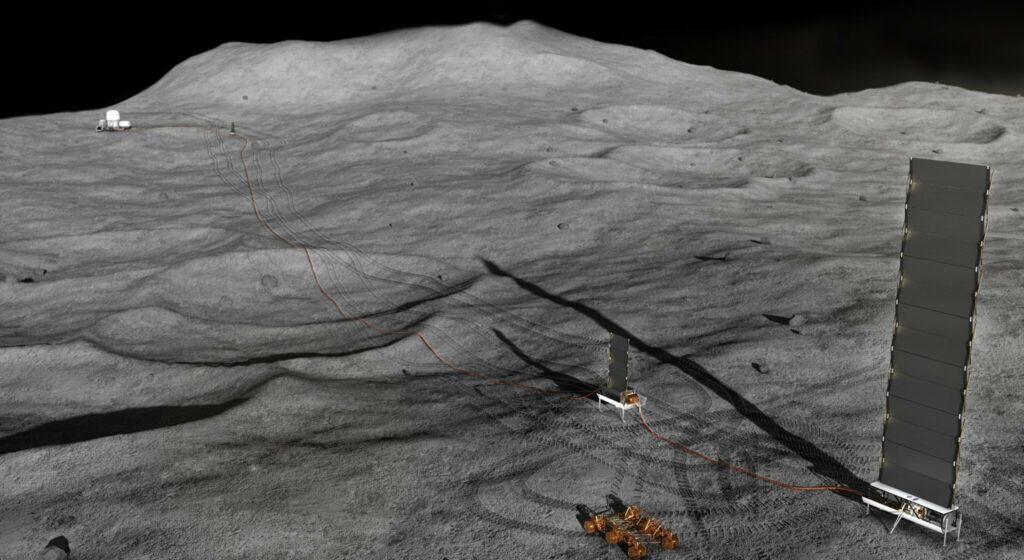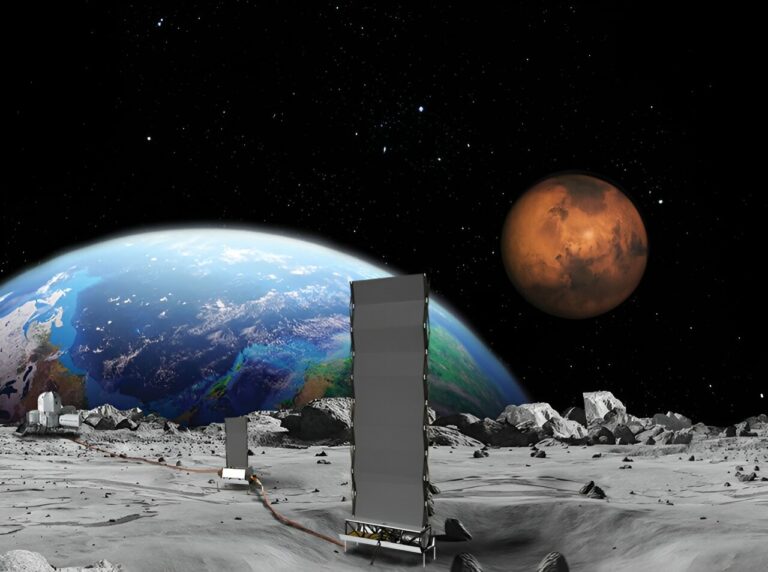NASA’s Fission Surface Power Project Powers Lunar Exploration
NASA is concluding the initial phase of its Fission Surface Power Project, which concentrated on creating concept designs for a compact nuclear fission reactor capable of generating electricity. This reactor could be utilized in a future moon demonstration and provide valuable insights for future Mars designs.
In 2022, NASA granted three contracts worth $5 million each to commercial partners. These partners were tasked with developing an initial design that encompassed the reactor, power conversion, heat rejection, power management and distribution systems, estimated costs, and a development schedule. The objective was to establish a foundation for sustaining human presence on the lunar surface for a minimum of 10 years.
Trudy Kortes, the program director of Technology Demonstration Missions within NASA’s Space Technology Mission Directorate, emphasized the necessity of demonstrating a safe, clean, and reliable nuclear power source on the moon. This would address the technical challenges posed by lunar nights and provide a power solution independent of solar energy, enabling long-term exploration and scientific endeavors on the moon.
While solar power systems face limitations on the moon, a nuclear reactor offers the advantage of being deployable in permanently shadowed areas, potentially near water ice deposits. Additionally, it can generate continuous power during the 14-and-a-half Earth-day lunar nights.
The initial reactor requirements were intentionally designed by NASA to be open and flexible, allowing commercial partners to bring innovative and unique approaches for technical evaluation, according to Lindsay Kaldon, the Fission Surface Power project manager at NASA’s Glenn Research Center in Cleveland.
The aim was to encourage out-of-the-box thinking, and as a result, there was a diverse range of approaches, each distinct from the others.
While NASA did not impose many specific requirements, they did stipulate that the reactor should weigh less than six metric tons and have the capability to generate 40 kilowatts (kW) of electrical power. This power output would be sufficient for demonstration purposes and provide additional power for lunar habitats, rovers, backup grids, or scientific experiments. In the United States, 40 kW can typically meet the electrical needs of 33 households.

In order to ensure the success of the project, NASA has established a goal for the reactor to operate autonomously for ten years. This is a crucial factor that needs to be achieved. The design of the reactor also places a strong emphasis on safety, particularly in terms of radiation exposure and shielding.
In addition to meeting these requirements, the partnerships involved in the project have also considered how the reactor will be powered and controlled remotely. They have identified potential faults and explored various fuel options and configurations. The collaboration between terrestrial nuclear companies and space experts has resulted in a diverse range of ideas.
To gather more information before moving on to Phase 2, NASA intends to extend the Phase 1 contracts. During this time, the agency will also seek input from the industry to design the final reactor that will be demonstrated on the moon. This additional knowledge will be instrumental in setting the requirements for Phase 2.
According to Kaldon, the project lead, the agency is receiving valuable information from the three partners involved. It will take some time to analyze and process this information in order to determine the most sensible approach for Phase 2. The aim is to leverage the best aspects of Phase 1 and design a lower-risk system for the future.
Open solicitation for Phase 2 is planned for 2025.
Following Phase 2, the anticipated timeframe for transporting a reactor to the launch pad is in the early 2030s. Once on the moon, the reactor will undergo a one-year demonstration period, followed by nine years of operational use. In the event of successful outcomes, there is a possibility of updating the reactor design for potential application on Mars.
In addition to preparing for Phase 2, NASA has recently granted contracts to Rolls Royce North American Technologies, Brayton Energy, and General Electric for the development of Brayton power converters.
In order to utilize thermal power generated through nuclear fission, it is necessary to convert it into electricity. Brayton converters address this challenge by utilizing temperature differences to rotate turbines within the converters. However, the current Brayton converters result in significant heat wastage. Consequently, NASA has tasked companies with enhancing the efficiency of these engines.
This article is republished from PhysORG under a Creative Commons license. Read the original article.
Do not forget to share your opinion with us to provide you with the best posts !




0 Comments